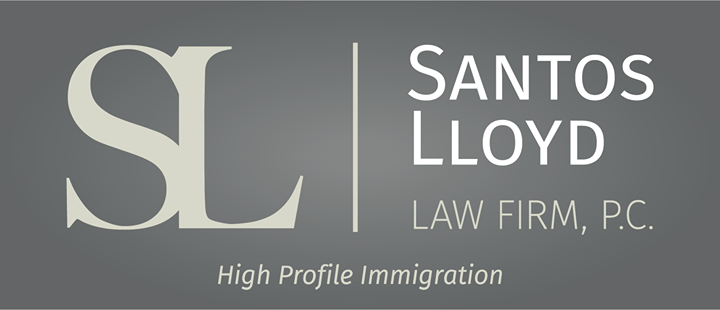¿Centro regional o inversión directa para su solicitud EB-5?
Kyle Huffman • August 15, 2024
Click here to read this article in English
A medida que los efectos de la Ley de Reforma e Integridad del EB-5 de 2022 continúan desarrollándose, esta categoría de visado de inmigrante ha experimentado un aumento vertiginoso de popularidad en los últimos meses. Antes de 2022, muchas personas de alto poder adquisitivo evitaban por completo la categoría EB-5, debido a la incertidumbre generalizada en torno al programa. No es ningún secreto que la categoría EB-5 es cara, y ¿quién podría culpar a un inversor por dudar a la hora de invertir una suma tan importante de capital en un vehículo de inversión con una supervisión o transparencia limitadas? Con la gran mayoría de las preocupaciones en torno al programa que se han aliviado a través de las disposiciones de la Reforma EB-5 y la Ley de Integridad de 2022, lo que permite una mayor supervisión reglamentaria, el aumento de los umbrales de inversión, la transparencia, e incluso la eliminación de capas de trámites burocráticos, los inversores están una vez más deseosos de participar en este programa altamente beneficioso.
Si está considerando realizar una inversión financiera significativa en los Estados Unidos, el programa EB-5 es una excelente oportunidad no sólo para realizar la inversión, sino para asegurar la residencia permanente, y eventualmente la ciudadanía, en los Estados Unidos por esas contribuciones. La idea que subyace al programa EB-5 es generar un estímulo económico para Estados Unidos, lo que incluye la creación de un número significativo de oportunidades de empleo para trabajadores estadounidenses. Los umbrales de inversión para los importes mínimos de inversión admisibles se diseñaron sobre la base de que la inversión de capital alcanzara un nivel suficiente de estímulo económico. Sin embargo, con un amplio margen entre los dos umbrales de inversión admisibles, y una amplia gama de posibles proyectos en los que invertir, muchos inversores se preguntan cuál es la vía EB-5 más adecuada para ellos.
En sentido amplio, hay dos tipos de inversión EB-5: Inversión directa, o Inversión a través de un centro regional aprobado por el USCIS. El mejor camino para cada caso potencial depende de las prioridades de cada individuo que solicita.
Para la inversión directa, la petición se presenta con el formulario I-526, Petición de Inmigrante como Inversor Independiente. Un inversor que presenta una Petición de Inversión Directa EB-5 tiene la oportunidad de invertir en una empresa responsable de la creación de al menos 10 puestos de trabajo a tiempo completo. Siempre que la organización pueda verificar la creación real y la existencia de estos puestos de trabajo, estas peticiones tienen una excelente oportunidad de ser aprobadas. Estas peticiones pueden ser especialmente beneficiosas para un inversor que crea firmemente en el éxito de una nueva empresa o concepto y desee que la mayor parte de su inversión se centre directamente en la empresa creadora de empleo.
Para una inversión en un centro regional, la petición se presenta con el formulario I-526E, Petición de inmigrante como inversor en un centro regional. Estos centros regionales se crean con el propósito expreso de facilitar la inversión EB-5. Cada centro regional debe solicitarlo debidamente al USCIS, y recibir su aprobación, antes de que pueda ser incluido por el USCIS en la lista de Centros Regionales Aprobados para Inversores Inmigrantes EB-5. Uno de los principales beneficios de invertir a través de un centro regional es la facilitación del proceso de solicitud, ya que los centros regionales proporcionarán una parte sustancial de la documentación requerida. Sin embargo, esto también suele dar lugar a un menor nivel de control sobre los fondos de inversión, en comparación con una inversión directa.
FPara ambos tipos de EB-5, el umbral de inversión viene determinado por factores geográficos y económicos dentro de Estados Unidos. Dado que el programa está diseñado para estimular la economía estadounidense, existe una amplia preferencia por invertir en lo que se conoce como "Targeted Employment Areas (TEAs)". Se trata de zonas rurales u otras zonas con una elevada tasa de desempleo, definida como una tasa de desempleo al menos un 50% superior a la media nacional de Estados Unidos. El importe mínimo de inversión admisible para una zona de empleo específica es de sólo 900.000 dólares, frente a un umbral mínimo de 1,8 millones de dólares para una inversión fuera de una zona de empleo específica. Sin embargo, para los inversores que confían en un proyecto de inversión concreto y están motivados principalmente por los beneficios potenciales, puede merecer la pena invertir directamente en la organización con mayor potencial, independientemente de la ubicación geográfica dentro de EE.UU. en la que se vaya a centrar la inversión.
En última instancia, la decisión sobre cuál es la mejor vía EB-5 es una determinación que debe tomar cada inversor individual y cambia en función de cada caso. Sin embargo, con una suma tan grande normalmente en juego, cada inversor quiere tener la confianza de que están eligiendo el mejor camino para sí mismos para lograr sus objetivos individuales. Si usted está considerando la posibilidad de realizar una inversión EB-5, y le gustaría discutir las preguntas o inquietudes que pueda tener acerca de qué camino EB-5 es el adecuado para usted, le animo a programar una consulta con uno de nuestros abogados expertos.
Este blog no pretende ser asesoramiento jurídico y nada de lo aquí expuesto debe interpretarse como el establecimiento de una relación abogado-cliente. Por favor, programe una consulta con un abogado de inmigración antes de actuar sobre cualquier información leída aquí.

Once you have connected with a college program, have been admitted to the school, and deemed eligible to compete athletically, you will need to secure an F-1 student visa in order to actually attend your new college and begin your time as a student athlete. The first step in the visa process is to receive your Form I-2

For many talented athletes around the world, U.S. college athletics represent a remarkable opportunity to combine elite athletic competition with higher education. In sports such as basketball, soccer, track and field, and tennis, among others, hundreds of colleges and universities across the United States offer struct

Under the new regulation, if a person filed or files Form I-589, Application for Asylum and for Withholding of Removal after October 1, 2024, and the application remains pending with USCIS for 365 days, the applicant must pay an Annual Asylum Fee (AAF) on the one-year anniversary of his or her filing date.



